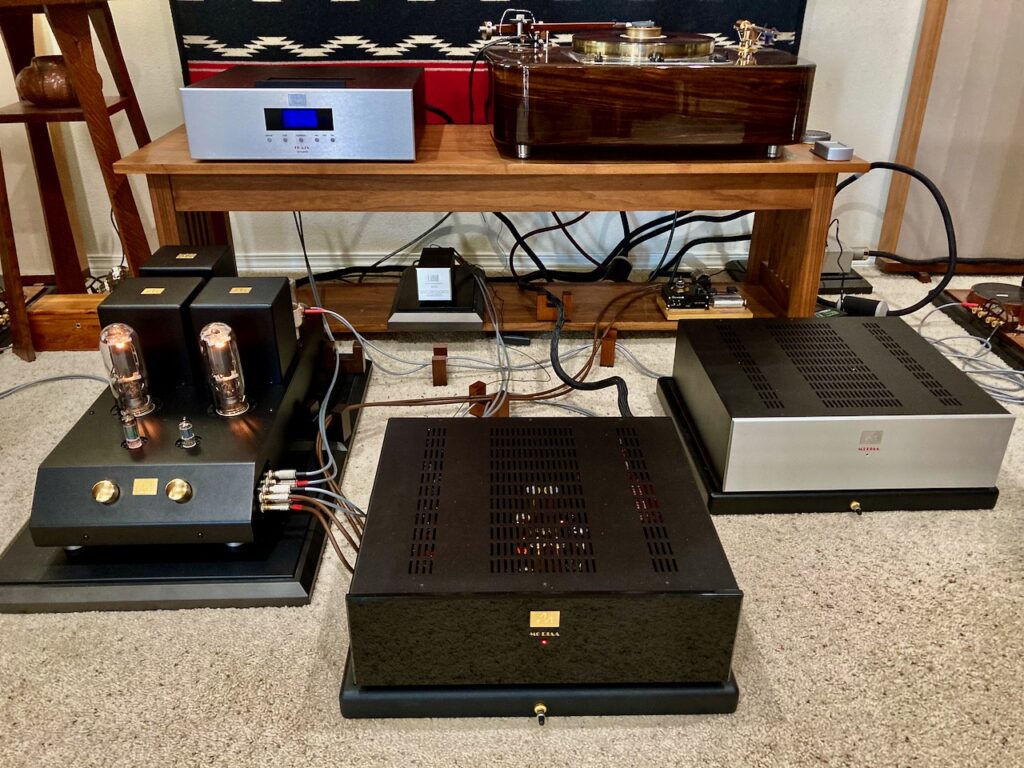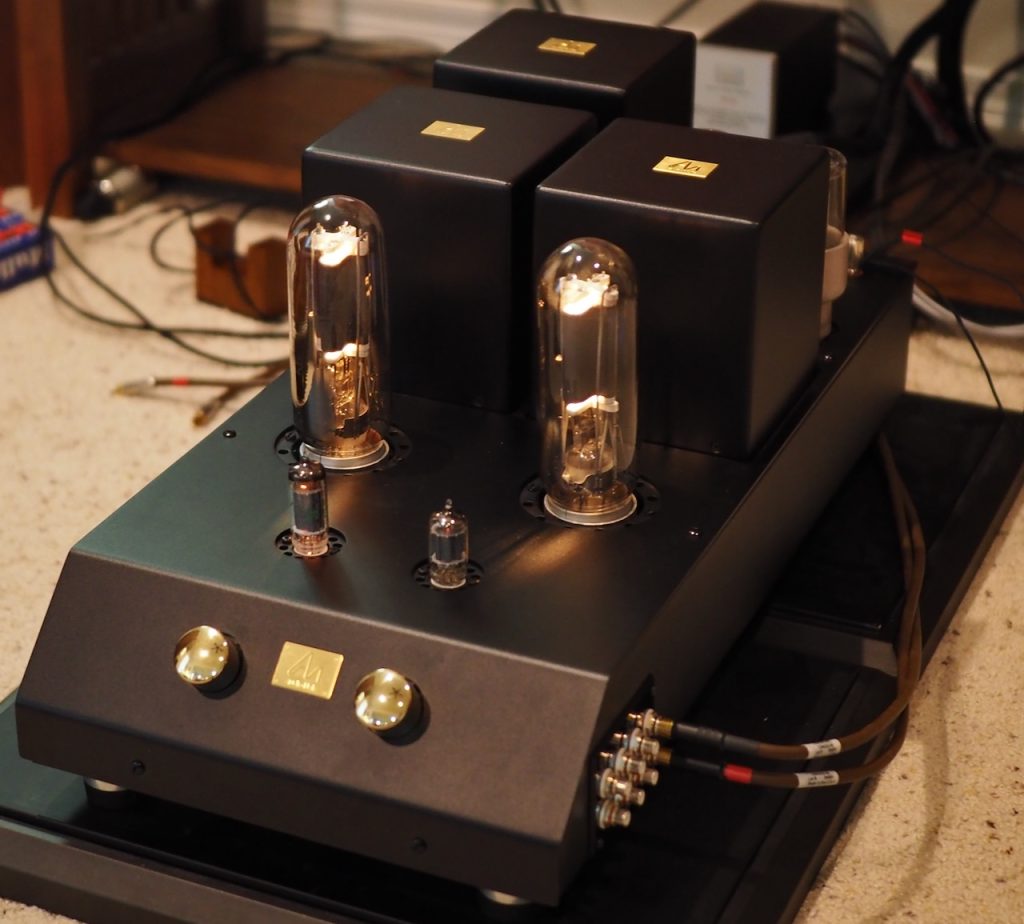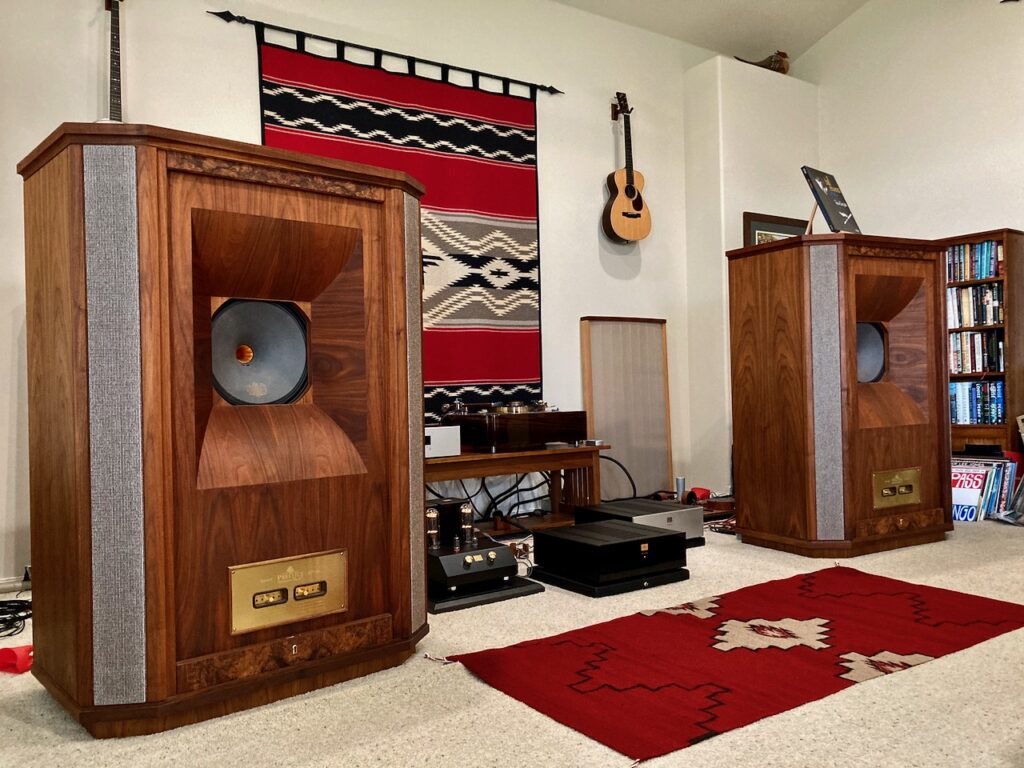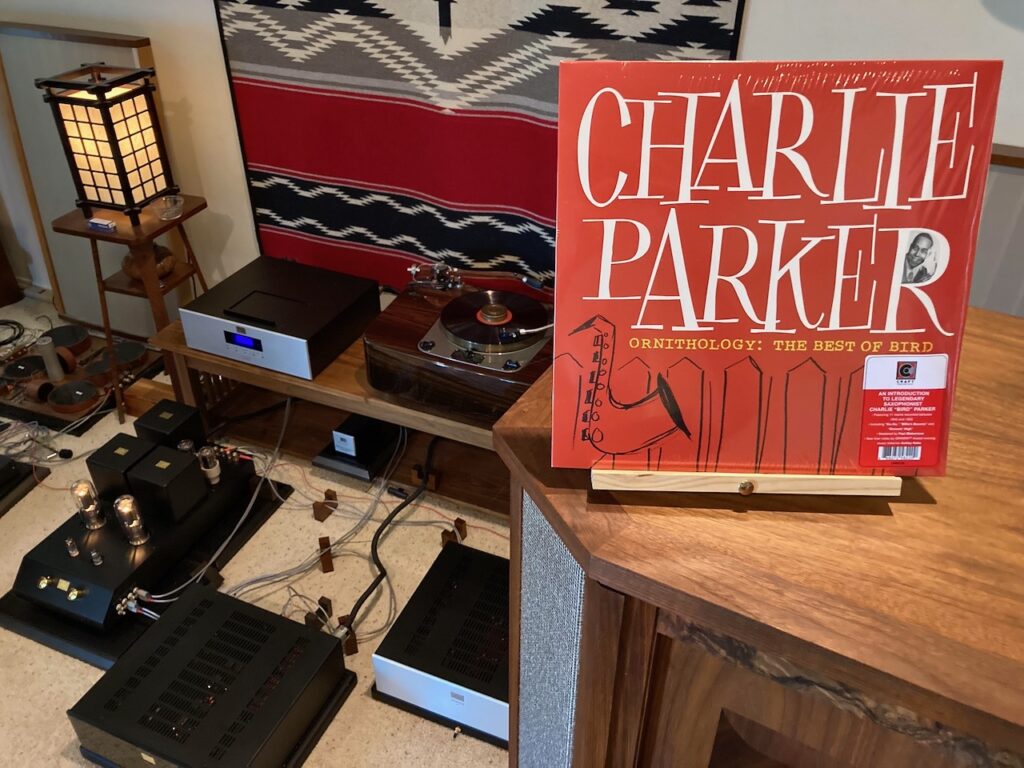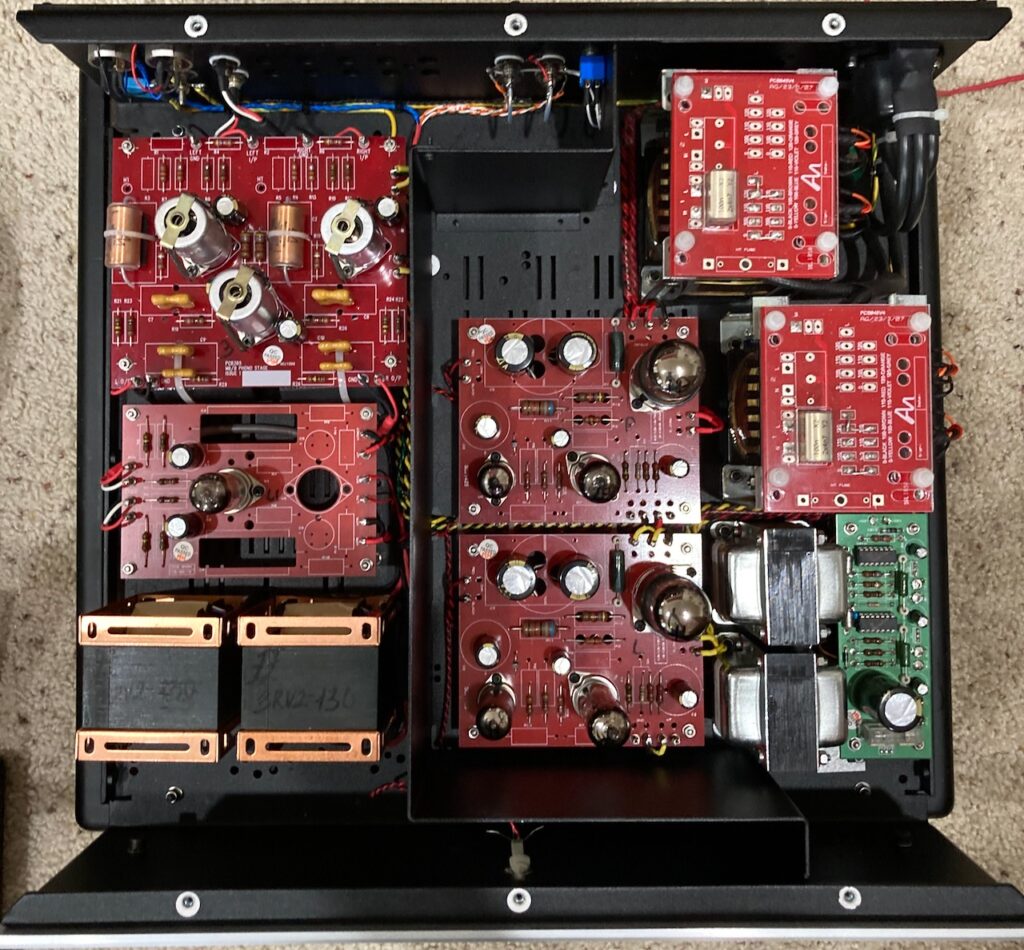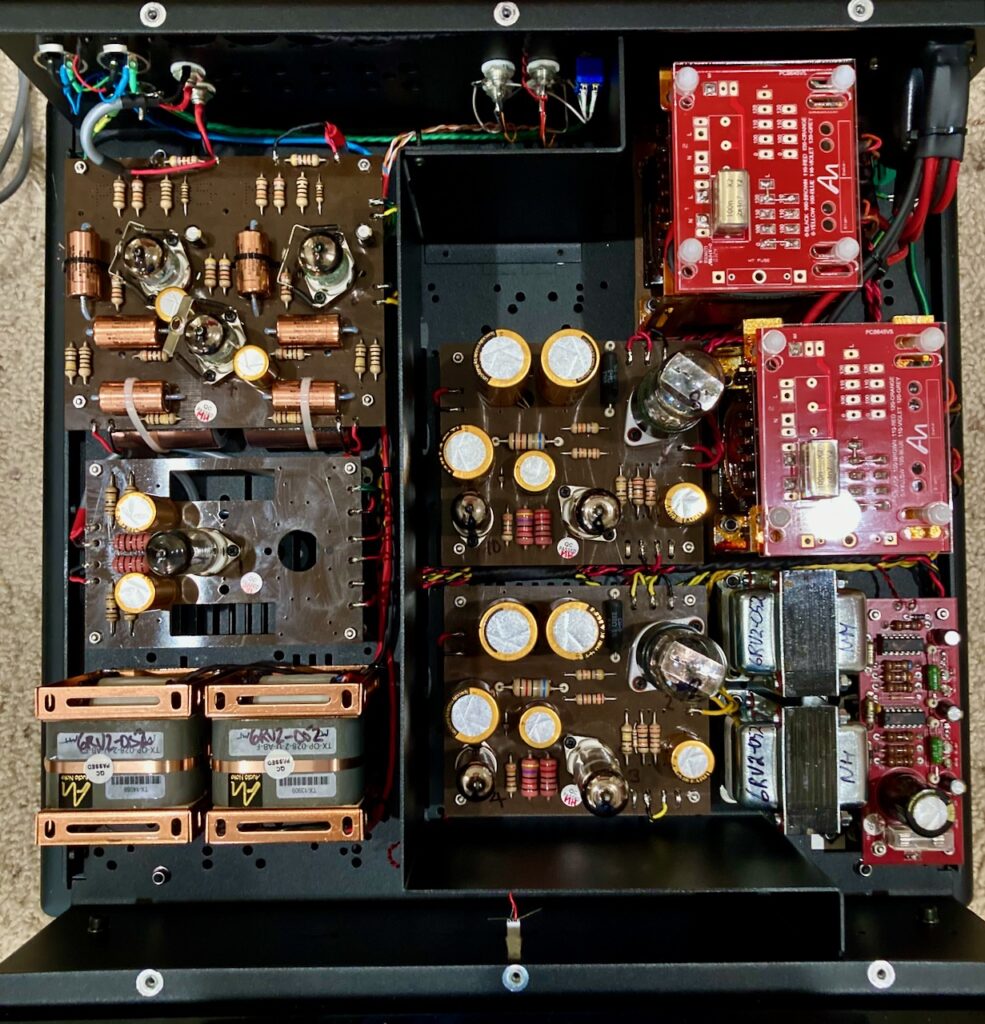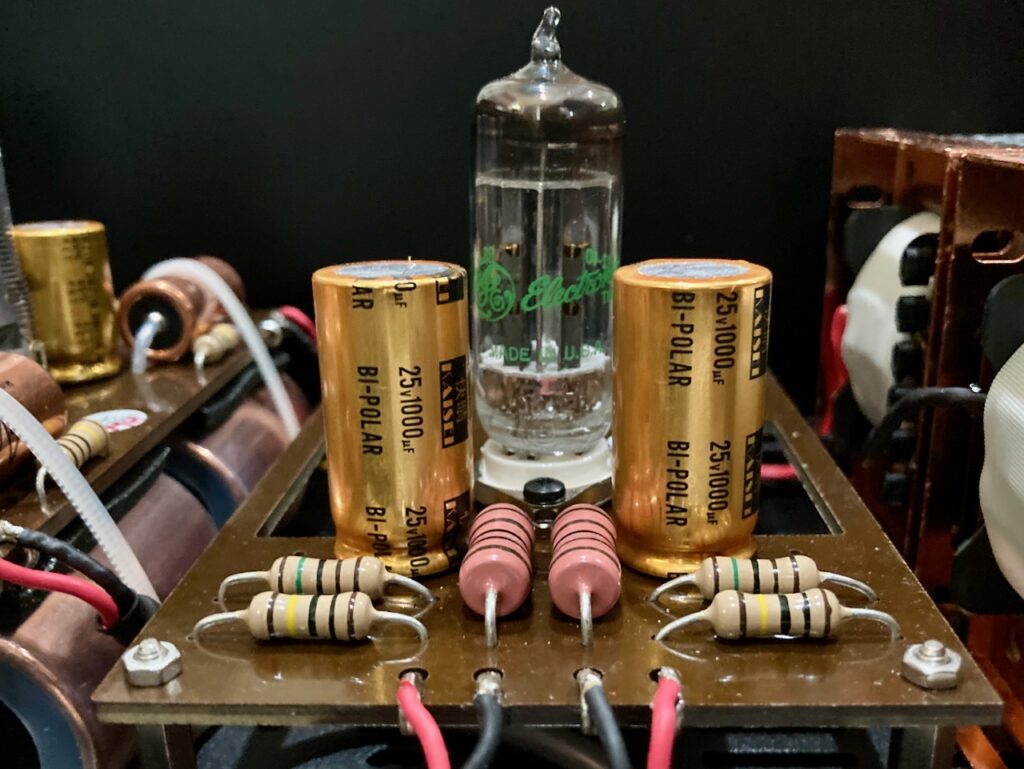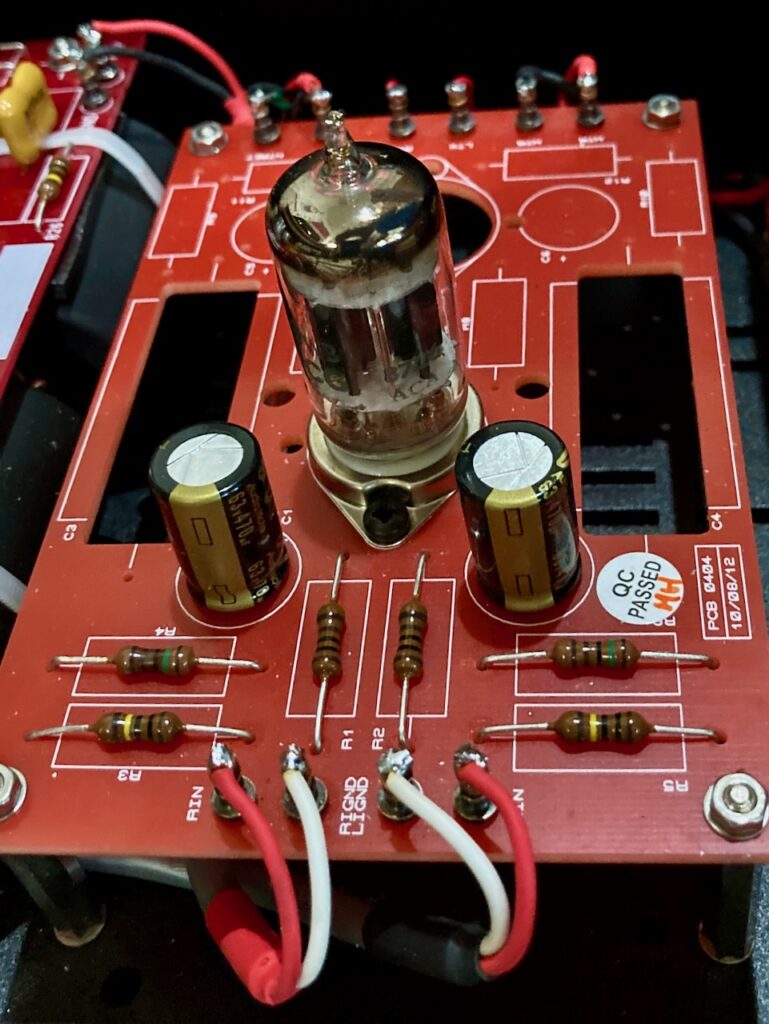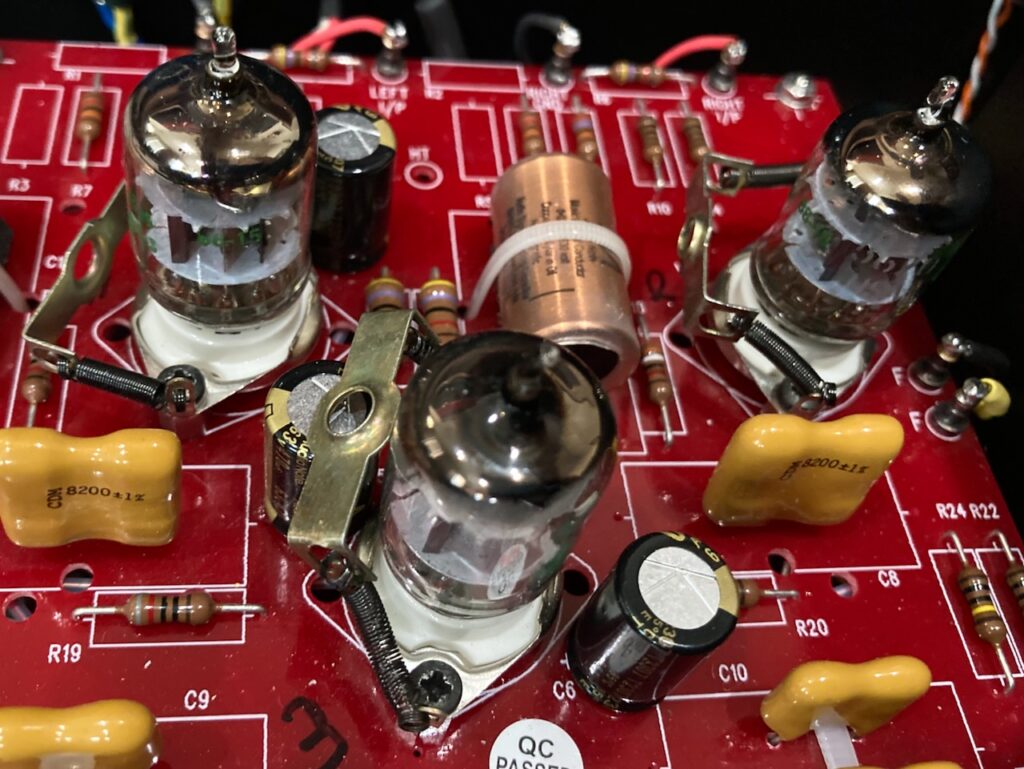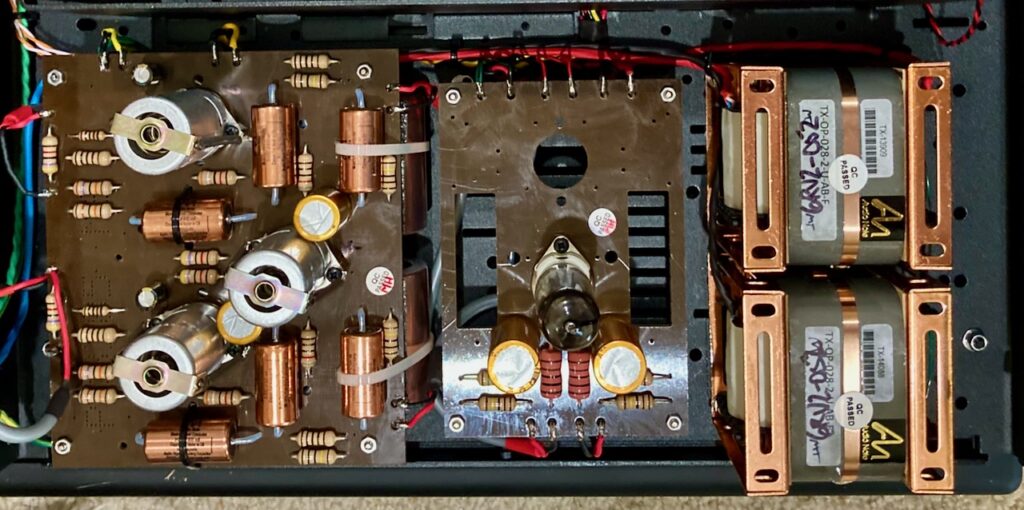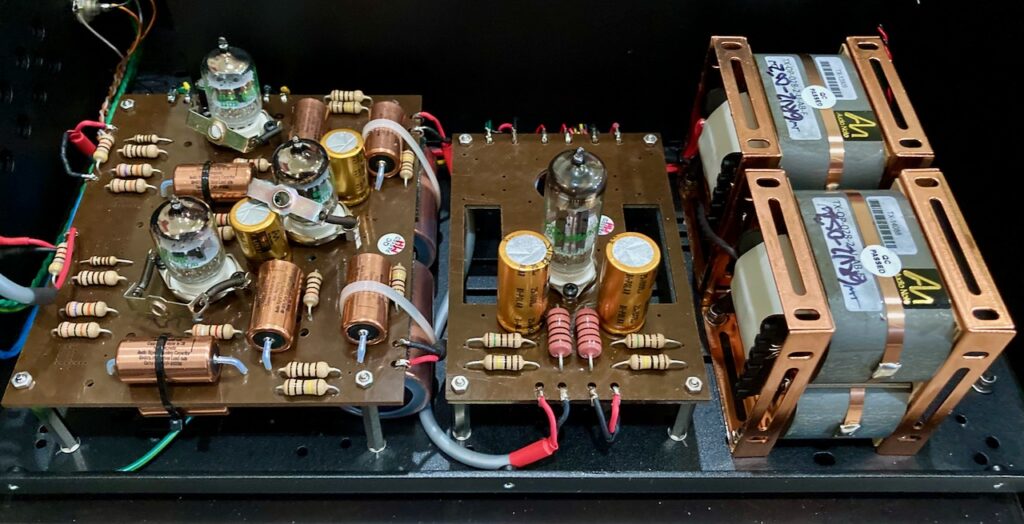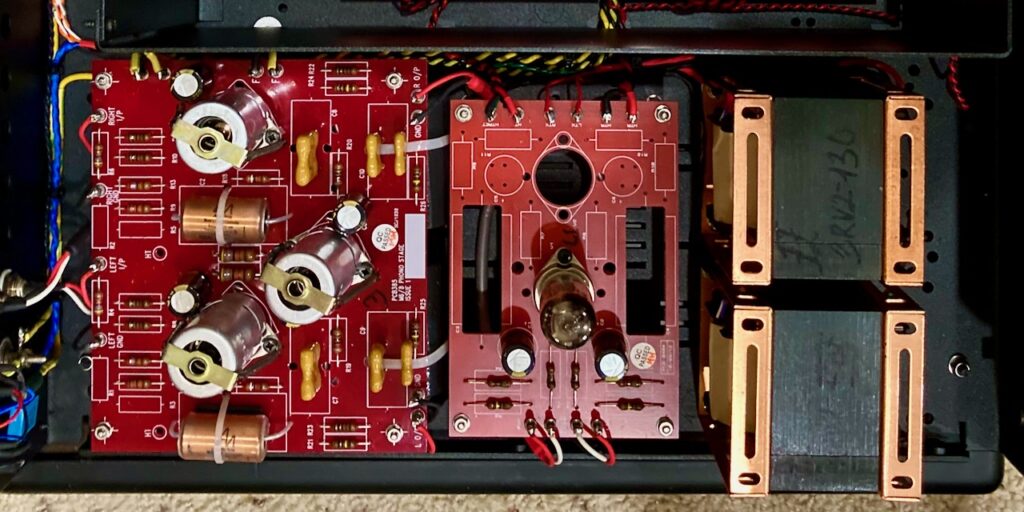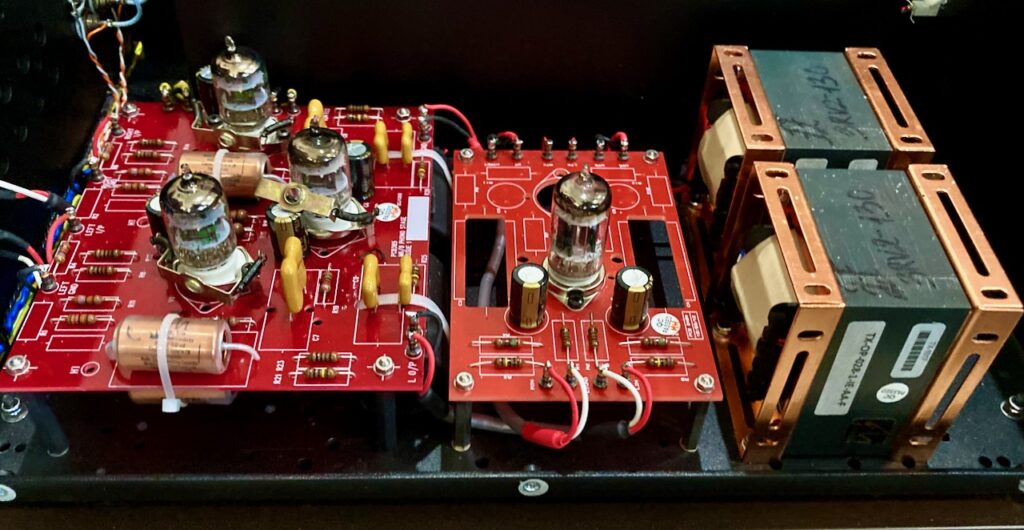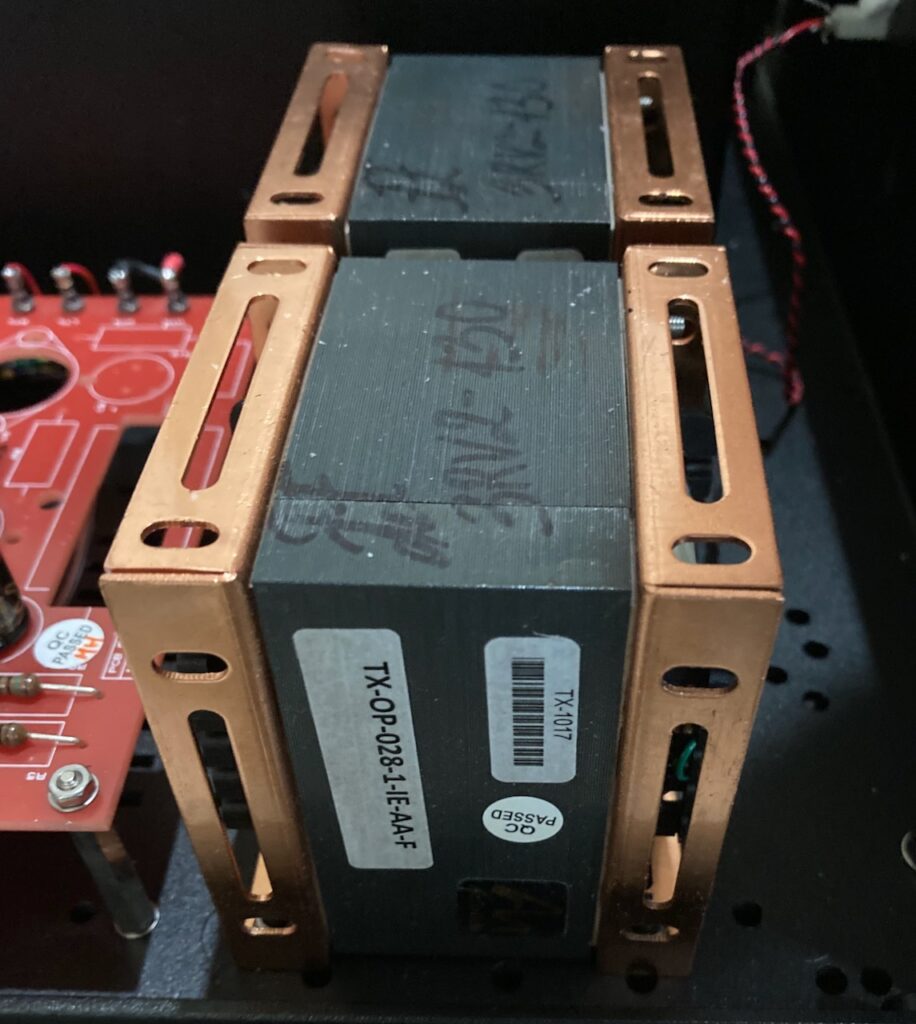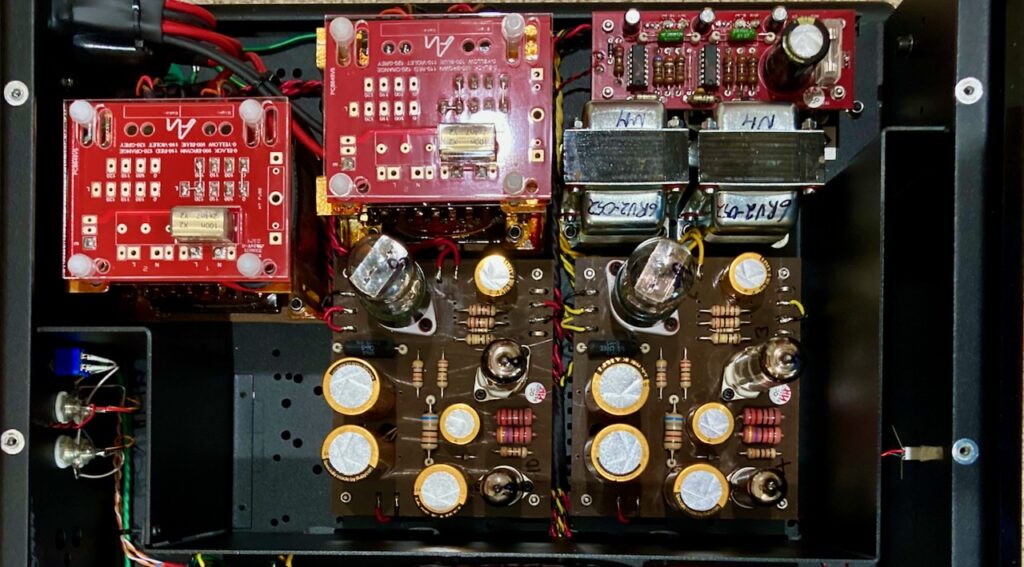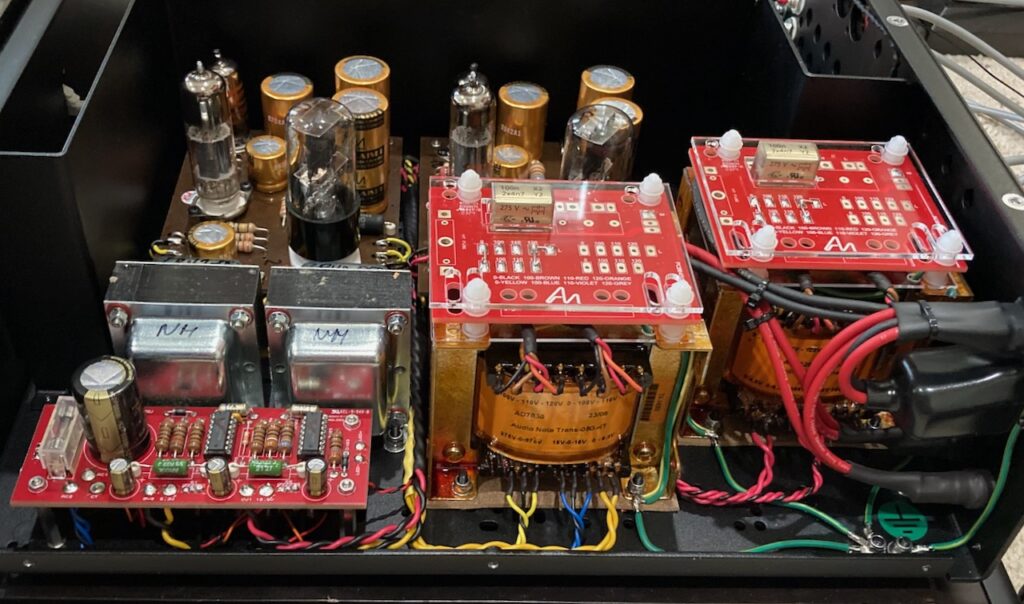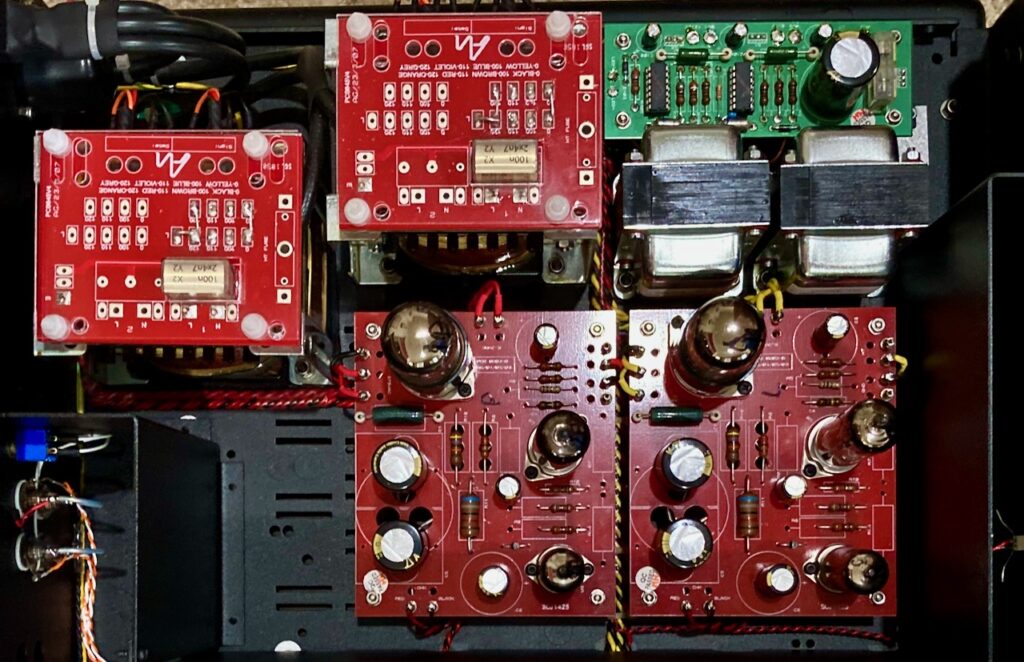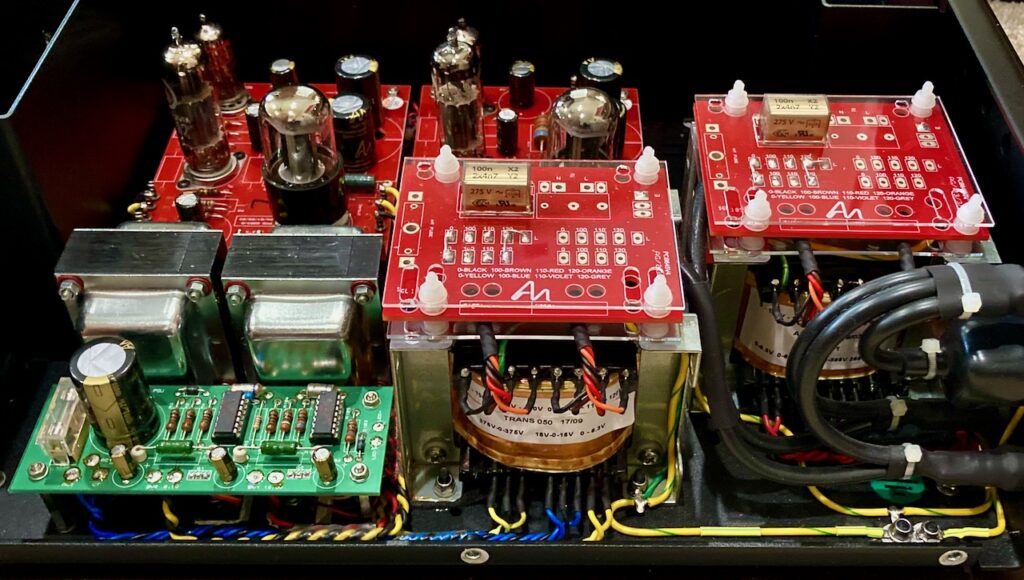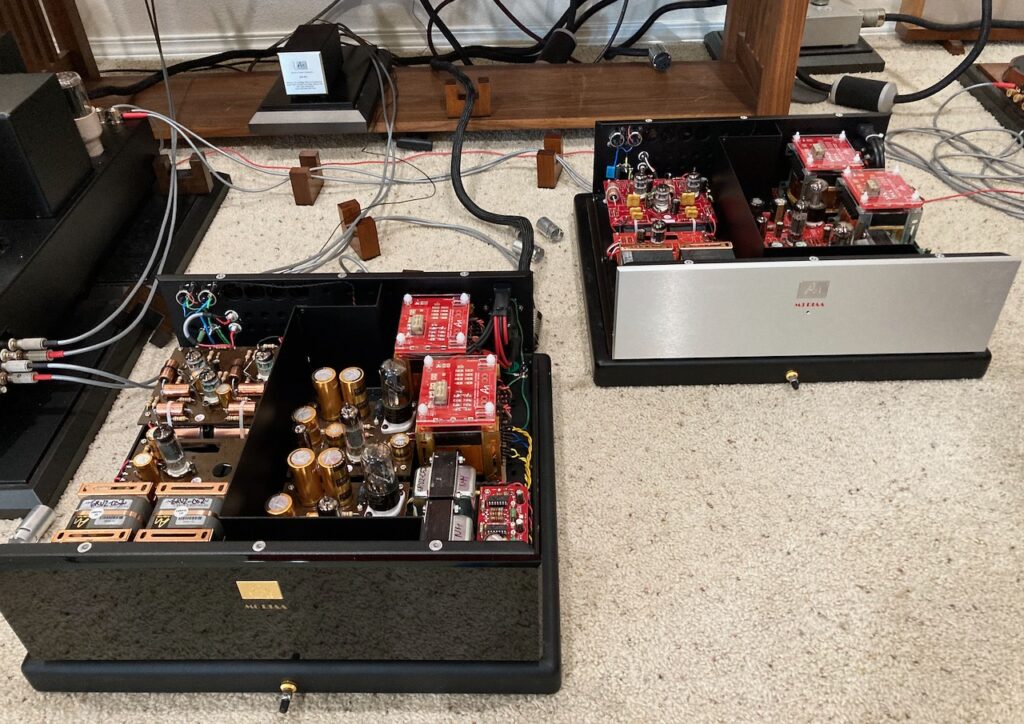I'm not quite sure how Audio Note (UK) accomplishes it, exactly. It is particularly noticeable with their Level 4 components like the Tomei 211 SET integrated amp, and the M6 RIAA phono preamplifier that is the primary subject of this post.
Here's what I hear: These components are incredibly resolving, making it easy to hear the nuances in the recording styles of all the albums I've been listening to, both across the eras of the recording arts, and within the eras.
Even with all that resolution, they make all my albums - from low-fidelity albums of great music, to high-fidelity audiophile favorites - much more musically satisfying to listen to, and they do it in rather dramatic fashion.
The recordings open up dramatically in visuospatial terms, tone sounds more natural, and the way the music blooms and flows in terms of musicality, is impressing the heck out of me.
Albums that I thought were so-so in fidelity turned out to be much better than I had imagined, and those superbly recorded albums did too! Across the range of fidelity the improvement was dramatic.
I've chatted with Peter Qvortrup on this topic, and I've asked Andy Grove and Darko Greguras - Audio Note (UK)'s audio design wizards - about these qualities as well, and how they achieve them.
Peter, Andy, and Darko have given me a glimpse into their R&D methodology, but understandably, they aren't divulging their deepest design secrets.
Here's what I've gleaned so far.
I see Peter as the "conductor" responsible for directing the overall development direction of Audio Note (UK) high-fidelity audio systems, such that all of the audio components that make up any given system are 'playing together' to deliver recorded musical performances to us listeners that will involve us emotionally, physiologically, and intellectually.
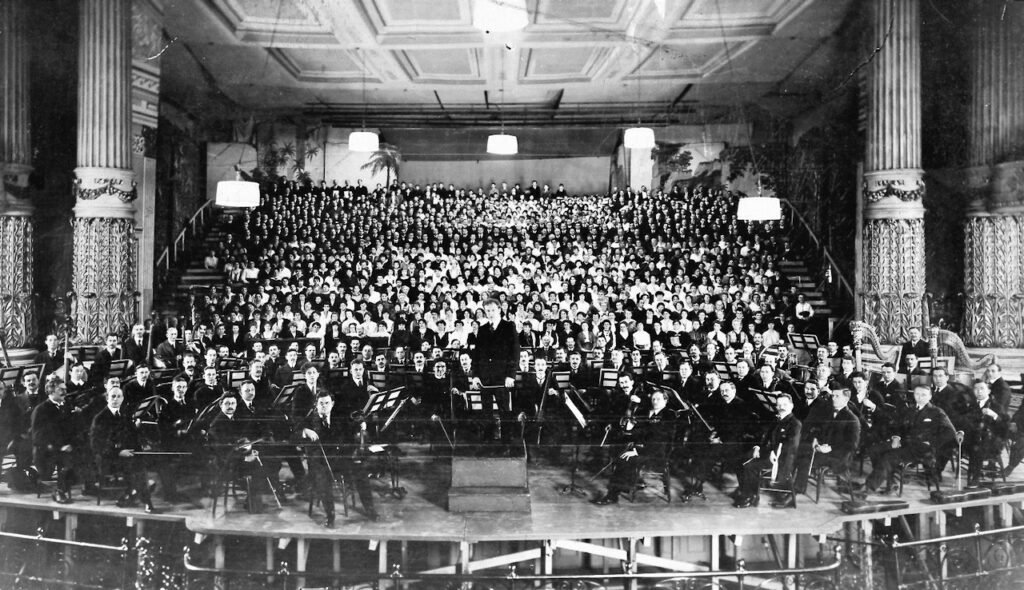
Conductor Leopold Stokowski and the Philadelphia Orchestra at the 1916 American premiere of Mahler's 8th Symphony. Public domain photo courtesy of Wikipedia.
Delivering involving musical performances to listeners is no easy design task.
There are a considerable number of musical genres that people enjoy listening to (e.g. Spotify categorizes music according to 1,300 genres these days), and perhaps even more of a challenge is the wide variability in the recorded fidelity of musical performances across & within the acoustic, electric, magnetic, and digital eras of the recording arts.
How do you take all that variability into account so that an audio system can then deliver engaging musical performances from all of those albums that make up our recorded music canon?
Peter, Andy, and Darko use a 'comparison by contrast' methodology during the R&D process, which is applied at the audio system level, the component level (sources, amplification, loudspeakers, etc.), as well as at the level of the individual components that make up any given circuit.
When using a comparison by contrast R&D methodology, one plays a large number of recordings from many musical genres, and recordings that span the spectrum of recording techniques used across the eras of the recording arts, while comparing two different audio systems, or system components, or circuit components, to determine which reveals more differences between the recordings.
The one that reveals more differences between recordings (e.g. is more resolving) is the audio system that is allowing more of the recorded information to come through.
The surprising thing for me, was that while listening to albums through an Audio Note (UK) system, or components, that most of the recordings sounded considerably better than I had experienced with them previously in other system or component contexts, simply because more musical information was coming through from the recordings.
Even with lower fidelity recordings from early in the recording arts, like those from the acoustic era of recording, allowing more information to come through elevated the level of the musical performances to such a degree that I found it breathtaking to experience. The "Wow!" factor.
Ditto for the electrical, monaural magnetic, stereo magnetic, and the digital eras of the recording arts.
I suppose it is a little counterintuitive that enabling more recorded information to come through (i.e. more resolution) would make recordings sound better, and be more emotionally, physiologically, and intellectually involving, but that's what I hear and feel.
One might think that letting more information through for lower fidelity recordings - like the Charlie Parker album in the photo above - would be counterproductive. It seems like it would make the lower fidelity recordings sound even lower in fidelity with more information coming through. But the opposite happens. The albums sound better, are more enjoyable generally, and are more musically involving.
My take on the comparison by contrast R&D methodology after extended listening is this: It turns out that enabling more of the recorded information to come through fills in the 'information gaps' that makes some recordings sound more amusical or poorly recorded than others. With that extra resolution, what is then revealed is more of the essence of the musical performances that the musicians and the recording engineers originally intended for you to experience.
Now there is, of course, more to it than that. It takes good ears that know music to be listening attentively during the comparison by contrast R&D process, artful choices in the circuits to be used, and in selecting components that make up those circuits, and to deliver an overall voicing that turns all of those recordings I want to listen to into the best possible versions of themselves, so that they sound better, and are more emotionally, physiologically, and intellectually involving.
Ok, so let's talk a little more about the difference between the Level Three M3 RIAA and the Level Four M6 RIAA.
First of all, what they have in common: the M3 RIAA phono stage is the first step of M3-M8 pre-amplifier family, all of which share the same circuit topology across the range (M3, M5, M6, and M8), with parts quality upgraded level by level within the range.
The Audio Note (UK) M3 through M8 RIAA phono preamplifier product line utilizes no negative feedback (NFB), and features the use of passive CR RIAA equalization.
Using no NFB is the purest high-performance way to build a phono preamplifier, and avoids the use of performance reducing NFB, as other valve phono stages do.
You can think of the no NFB approach to phono preamplifier design as the purity equivalent of a single-ended-triode amplifier compared to a push-pull amplifier, as more important signal information comes through than would be possible when using NFB in a circuit.
The overall specifications for the M6 RIAA phono preamplifier are an input sensitivity of 47 kΩ, an input sensitivity of 126 mV for 1 V output, an output impedance of <10 Ohms, a weight of approximately 37.5 pounds, and dimensions of 5.5 inches high, by 17.3 inches wide, and 16 inches deep.
Ten vacuum tubes are used in the M6 & M3 RIAAs' circuits:
On the line stage side of the chassis the M6 uses a single NOS GE 7044 for V2, and the M3 uses a NOS JAN Phillips 5687WB.
On the power supplies side of the chassis (photos below):
The M6 uses 2 x NOS Phillips 6X5G in V3 and V9, and the M3 uses 2 x NOS 6U5C Russian tubes.
The M6 uses 2 x NOS RCA ECL82/6BM8 in V4 and V10, and the M3 uses 2x Yugoslavian Ei ECL82 in V4 and V10.
Both the M6 & M3 use 2 x NOS Raytheon JAN 5651WA in V5 and V11.
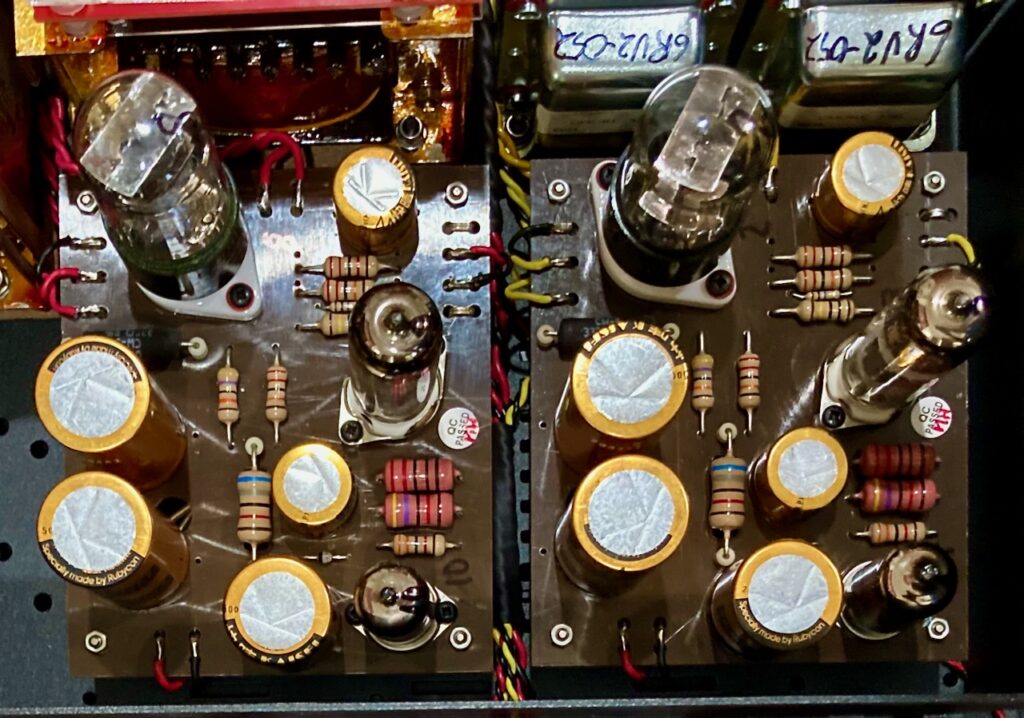
M6 uses 2 x NOS Phillips 6X5G in V3 and V9; 2 x NOS RCA ECL82/6BM8 in V4 and V10; 2 x Raytheon JAN 5651WA in V5 and V11.
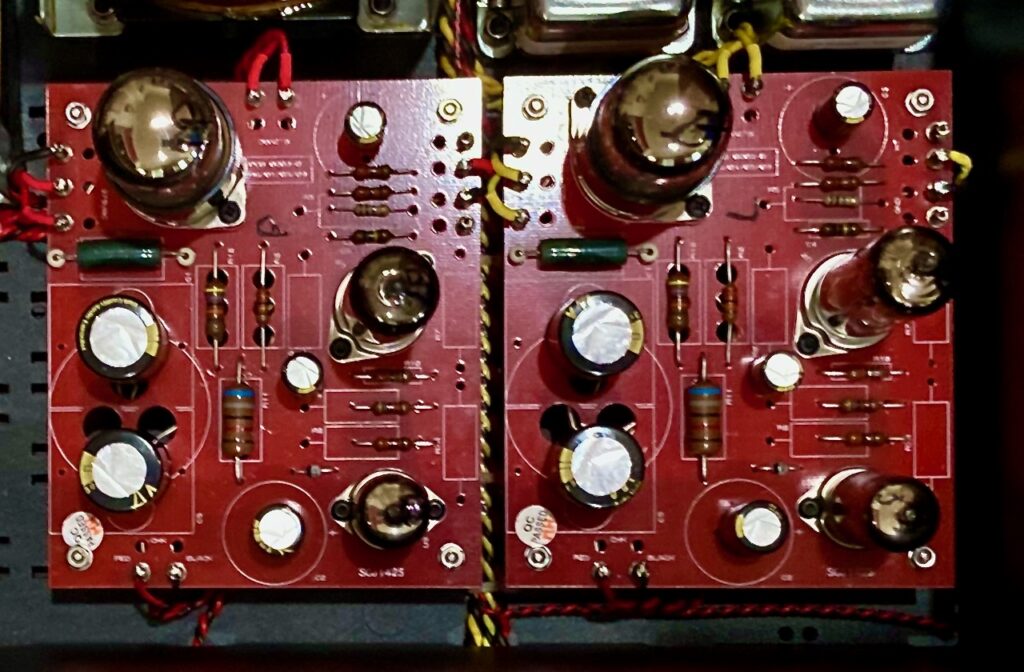
M3 uses 2 x NOS 6U5C Russian tubes in V3 and V9; 2x Ei ECL82 in V4 and V10; 2 x Raytheon JAN 5651WA in V5 and V11.
Line stage side of chassis:
Both M6 and the M3 use 3 x GE JAN 5670W/2C51W in V6-8.
Both the M3 & M6 RIAA feature pure Class A operation, zero negative feedback, single-ended circuit topology, valve rectification, and where the M6 attains its Level Four designation over the M3's Level Three designation, is in the materials and component quality of the circuit topology.
Level Three & Four Differences
As noted above, the M6 RIAA features an ECC82 and 7044 in the line stage, whereas the M3 RIAA features an ECC82 and 5687WB in the line stage.
The M6 utilizes Audio Note (UK) silver wiring (M3 has copper wiring) and tantalum resistors. Audio Note (UK) custom electrolytic capacitors and Audio Note (UK) copper foil signal capacitors are used throughout the M6's circuit.
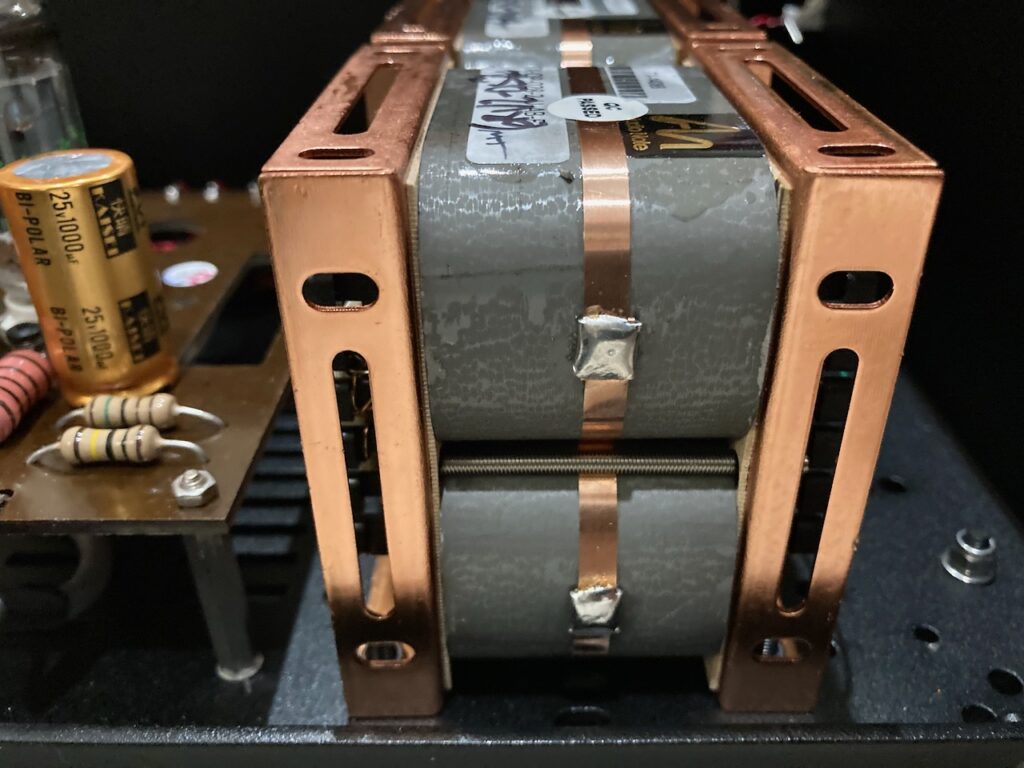
Custom Audio Note (UK) output transformers with a UHiB c-core, copper primary and silver secondary windings.
In the M6, in-house designed and manufactured, custom Audio Note (UK) output transformers, which feature a UHiB c-core, copper primary and silver secondary windings are featured (whereas the M3 has Audio Note (UK) output transformers with I-E M4 cores and copper windings).
More photos of the power supplies side of the chassis:
For additional information, you can read through the owner's manuals for the M3 RIAA (HERE) and the M6 RIAA (HERE).
Ok, that's it for now. I hope you enjoyed the "walkthrough" of the insides of the Audio Note (UK) M6 RIAA and M3 RIAA phono stages.
Over the next few weeks I'll do some comparative listening with the M3 RIAA and M6 RIAA phono stages and will report back on what I find out.
As always, thanks for stopping by, and may the tone be with you!




